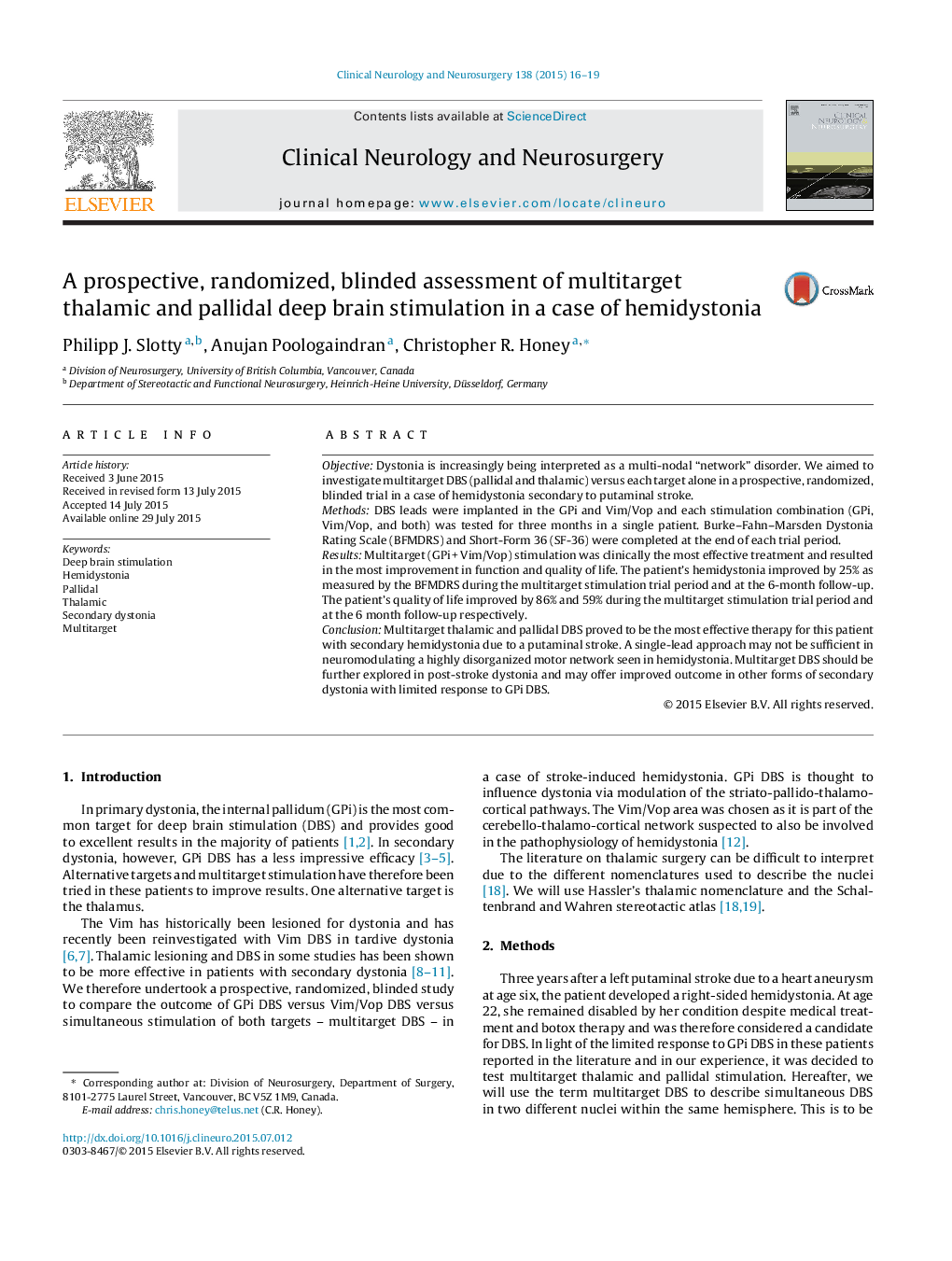| Article ID | Journal | Published Year | Pages | File Type |
|---|---|---|---|---|
| 3039718 | Clinical Neurology and Neurosurgery | 2015 | 4 Pages |
•Thalamic, pallidal and multi-target DBS was tested for stroke-induced hemi-dystonia.•Multi-target DBS was most effective as measured by the BFMDRS and SF-36.•Multi-target DBS needs further investigation in intractable secondary dystonia.
ObjectiveDystonia is increasingly being interpreted as a multi-nodal “network” disorder. We aimed to investigate multitarget DBS (pallidal and thalamic) versus each target alone in a prospective, randomized, blinded trial in a case of hemidystonia secondary to putaminal stroke.MethodsDBS leads were implanted in the GPi and Vim/Vop and each stimulation combination (GPi, Vim/Vop, and both) was tested for three months in a single patient. Burke–Fahn–Marsden Dystonia Rating Scale (BFMDRS) and Short-Form 36 (SF-36) were completed at the end of each trial period.ResultsMultitarget (GPi + Vim/Vop) stimulation was clinically the most effective treatment and resulted in the most improvement in function and quality of life. The patient's hemidystonia improved by 25% as measured by the BFMDRS during the multitarget stimulation trial period and at the 6-month follow-up. The patient's quality of life improved by 86% and 59% during the multitarget stimulation trial period and at the 6 month follow-up respectively.ConclusionMultitarget thalamic and pallidal DBS proved to be the most effective therapy for this patient with secondary hemidystonia due to a putaminal stroke. A single-lead approach may not be sufficient in neuromodulating a highly disorganized motor network seen in hemidystonia. Multitarget DBS should be further explored in post-stroke dystonia and may offer improved outcome in other forms of secondary dystonia with limited response to GPi DBS.
